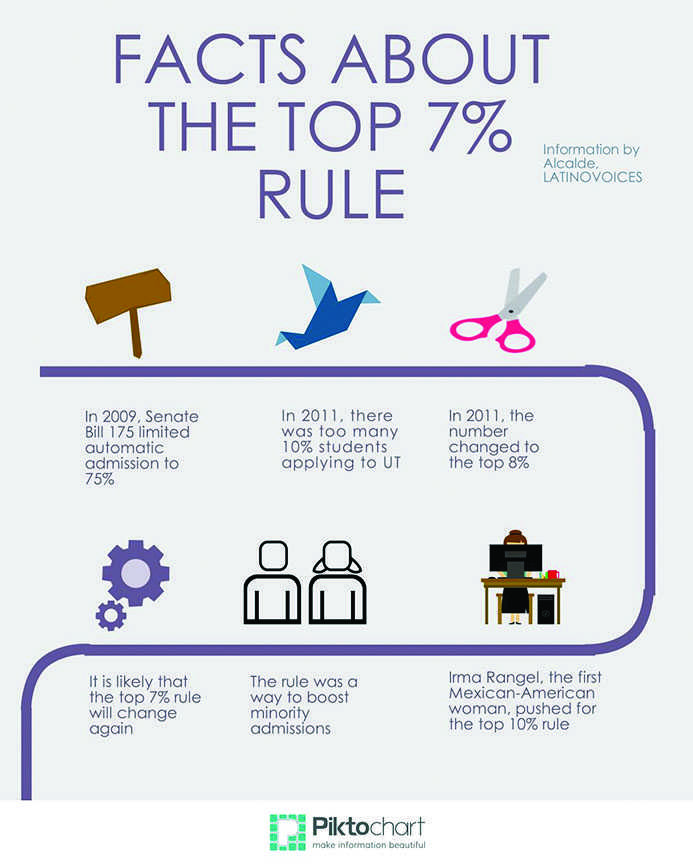Taking the Top
Examining fairness of ‘Top 7 percent’ rule
The “seven percent” rule has caused much controversy among the student body. Originally in the summer of 2010, the top ten percent of the student body had automatic acceptance to the Texas state schools. Four years later, the number has now dropped to seven percent.
Colleges want to pick the most capable, intelligent, and deserving students to get automatic acceptance. Although this goal might not always be fully achieved with the top seven percent rule, it has caused more benefits than drawbacks in regards to the educational system as a whole.
The seven percent rule is vital for opening college opportunities up for students in lower income districts. The schools in these districts may not gain as much recognition from admission officers, and this may result in students receiving unequal opportunities to get into college. This is unfair because the school’s reputation is greatly affecting student’s chances, and if the students are working hard and doing well, they will not gain the same recognition as a students in more prestigious high schools. Therefore the top seven percent rule gives hard working, less fortunate students more equal opportunity to enter in a public university. This becomes an escape from the circle of poverty. Thus, the top seven percent rule is an incentive for less fortunate students to better their circumstances.
Automatic acceptance gives a fair opportunity to both lower income districts and higher income districts. Students in both districts can now enter in public universities without being subject to bias. The seven perfect rule has provided great benefits to the Texas educational system, and it will continue its legacy.


![Tips for Studying Finals [INFOGRAPHIC]](https://crhscountyline.com/wp-content/uploads/2022/12/Studying-for-Finals-475x267.jpg)


